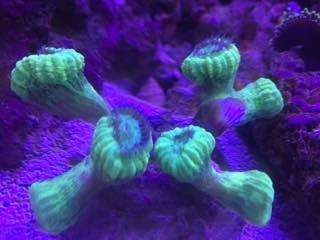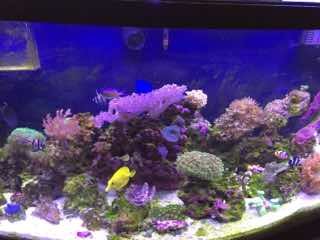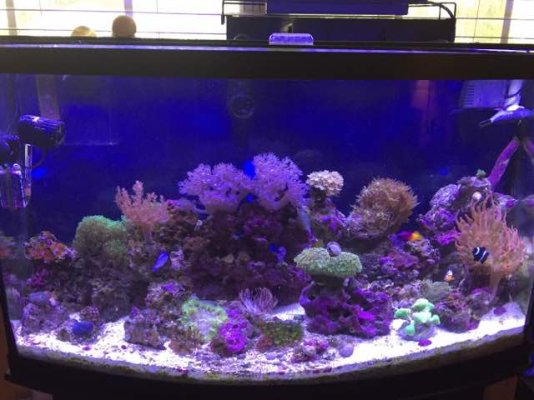sindee
Aquarium Advice Newbie
- Joined
- Feb 25, 2017
- Messages
- 6
1. I have a 47 gallon bowed reef tank for 2 years now . I have a Trumpet coral that I've had for 5 months that seems to be dying from the bottom up. Since I've started my tank I haven't had any problems with my corals dying most of them have grown or stayed the same.
I'm think maybe it needs more light and I need to move it to the top. Can trumpet coral come back after it starts to die? Do I need to dose my tank? And if so what do use? Iodine? Sometimes I add calcium but that's all I've ever added to my tank.
2. Lighting: Current USA Orbit Marine Aquarium LED Light 36 inch
3. Nitrate: 15
4. Calcium: 430
5. Phosphate: .25
6. Alkalinity: 14.32
7. pH: 8.1
8. Salinity: 0.025
9. Temperature: 80
10. Liquid or strip test kits: liquid test API
11. Location in tank: I have it sitting on the bottom of my tank.
12. Current amount of flow: medium flow
13. Current tank dosing regimen: I'm not dosing at this time but I do add calcium every once in a while.
14. Nearby coral: mushroom coral

I'm think maybe it needs more light and I need to move it to the top. Can trumpet coral come back after it starts to die? Do I need to dose my tank? And if so what do use? Iodine? Sometimes I add calcium but that's all I've ever added to my tank.
2. Lighting: Current USA Orbit Marine Aquarium LED Light 36 inch
3. Nitrate: 15
4. Calcium: 430
5. Phosphate: .25
6. Alkalinity: 14.32
7. pH: 8.1
8. Salinity: 0.025
9. Temperature: 80
10. Liquid or strip test kits: liquid test API
11. Location in tank: I have it sitting on the bottom of my tank.
12. Current amount of flow: medium flow
13. Current tank dosing regimen: I'm not dosing at this time but I do add calcium every once in a while.
14. Nearby coral: mushroom coral


Last edited by a moderator:

